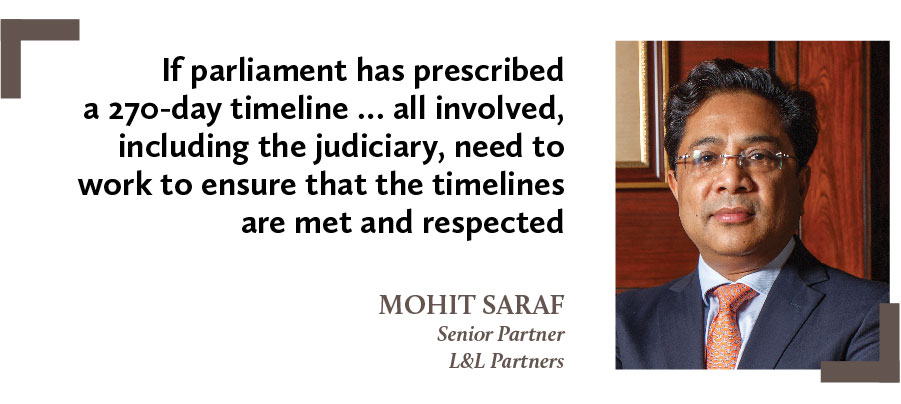Did the reluctance of Jet Airways’ creditors to pursue bankruptcy proceedings point to turbulence in the insolvency regime? Rebecca Abraham reports
Editor’s note: The National Company Law Tribunal (NCLT) Mumbai bench admitted the insolvency petition for Jet Airways on 20 June.
The story of grounded airline Jet Airways has taken several twists and turns in recent weeks. Since the airline defaulted on loans due on 31 December 2018, its creditors, led by State Bank of India, have taken charge, and efforts to find a buyer are on.
At stake are not only the livelihoods of the airline’s 23,000 employees but also about ₹84 billion (US$1.2 billion) that banks are seeking to recover.
The elephant in the room in the Jet Airways saga appears to be the Insolvency and Bankruptcy Code, 2016 (IBC). Despite the IBC’s promise of a time-bound process that gives creditors the upper hand in their relationship with debtors, there initially appeared to be little appetite to push the airline into bankruptcy proceedings (bankruptcy proceedings were finally initiated on 20 June).
Reports suggested that creditors had resisted referring the company for insolvency resolution, and the National Company Law Tribunal (NCLT) had initially been kept conspicuously at arm’s length.
Some observers see this as an indication of rising cynicism among creditors about recovering bad debts through the IBC. According to a banker who did not want to be named, banks are increasingly seeking alternate avenues for the resolution of insolvencies in the hope of realizing more value in a shorter period of time.
PLAYING THE SYSTEM
Questions about the ability to realize the real value of assets through the IBC process have existed ever since the first resolution order was made by the NCLT in August 2017. That order – which related to Synergies Dooray Automotive – was passed within the 180-day time limit for approval of resolution plans, and saw the lenders in question settling for 94% less than their total claim.
This gave rise to concerns over the extent of the haircut involved, and also triggered allegations that the promoters of Synergies Dooray Automotive had played the system. Minority creditor Edelweiss Asset Reconstruction filed a petition alleging that Synergies Casting, a related party of Synergies Dooray, had bought out the loans from various creditors at a minor consideration and transferred them to Millennium Finance, which the petitioner alleged was acting as a proxy for the promoters.
To address this and similar concerns in other cases, section 29A was added to the IBC in November 2017, preventing defaulting promoters and related persons from bidding for assets. But this new twist in the insolvency process has increased the challenge of adhering to deadlines and triggered considerable litigation regarding the eligibility of resolution applicants.
A notable case in which section 29A played a vital role is the long-running and high-profile saga over the insolvency of Essar Steel, which was one of 12 big defaulters on a list of non-performing accounts compiled by the Reserve Bank of India in June 2017 that were to be referred immediately for bankruptcy proceedings. It was first admitted for resolution under the IBC more than 600 days ago and has since become emblematic of the near impossibility of adhering to the 270-day timeline (180 days plus a 90-day extension) in a system where high-stakes legal battles cannot be curbed and delays in the courts are endemic.
“If parliament has prescribed a 270-day timeline … all involved, including the judiciary, need to work to ensure that the timelines are met and respected,” says Mohit Saraf, a senior partner at L&L Partners, which has advised and acted on several of the more complex insolvency matters. “They have to appreciate that this is a commercial problem involving companies that have a limited shelf life, and if disputes are not resolved swiftly then the companies will cease to be viable concerns and bidders will lose interest,” he says.

You must be a
subscribersubscribersubscribersubscriber
to read this content, please
subscribesubscribesubscribesubscribe
today.
For group subscribers, please click here to access.
Interested in group subscription? Please contact us.



























